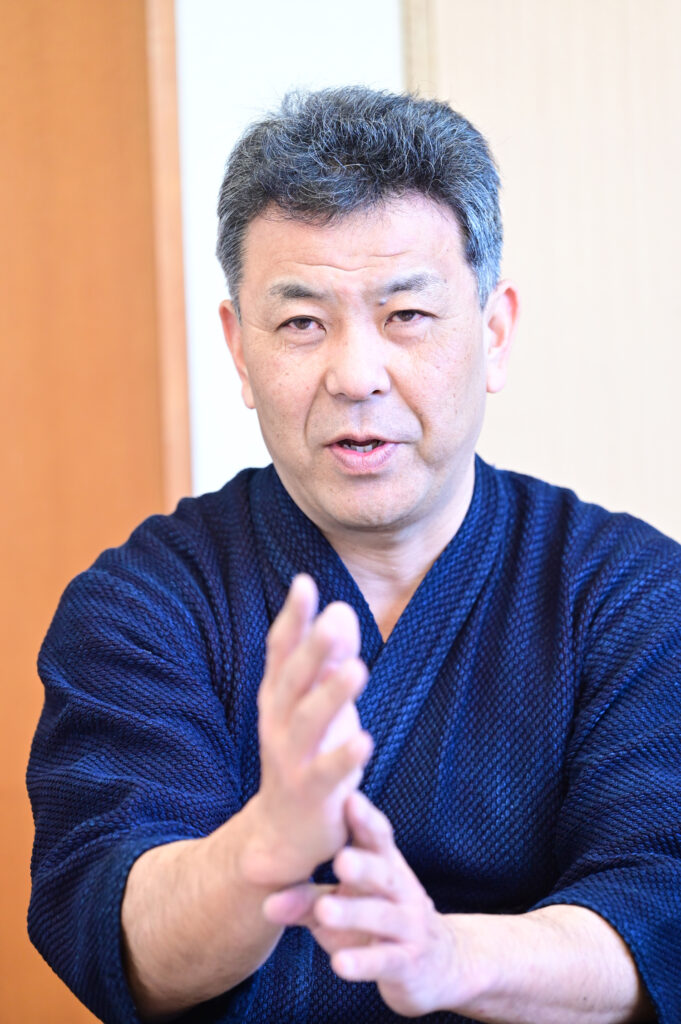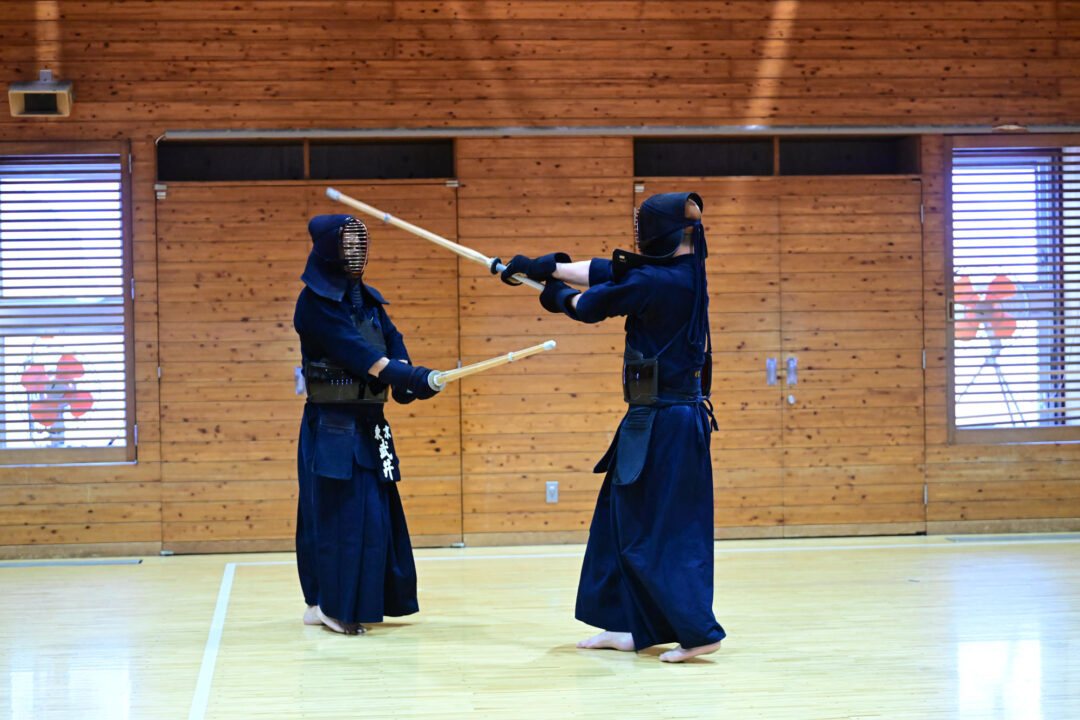2024.5 KENDOJIDAI
Photography: Nishiguchi Kunihiko
Translation: Pepijn Boomgaard
The Kokushikan University Kendo Club usually performs three sets of Sayu-men during Kirikaeshi. Kirikaeshi is an effective way of fostering energy and strengthening the body, and it is important to study and improve this way of training.
Takei Koji (Kyoshi 8th Dan)

Ono Soichiro Sensei, the first president of Kokushikan University, used to say that Kirikaeshi has to be big. At that time, the Kendo club had more than 200 members, so it was not easy to receive detailed personal advice from the teachers, but every day, I practiced while thinking about the advice I had received.
In general, Kirikaeshi consists of Shomen followed by 9 Sayu-men strikes, and is done twice. However, at Kokushikan, we would do it three times.
It is my understanding that it was Ono Sensei’s intention to teach the students by example. They would push the students by having them do 30, 50, and 100 strike Kirikaeshi, something we still do today.
Kirikaeshi is not only essential for building a strong Kamae, but also for improving Maai, footwork, Hasuji, and Tenouchi. However, if the students do not understand why we spend so much time practicing Kirikaeshi, they will think of it as just exercise. I teach them to think carefully about why the large strikes in Kirikaeshi lead to the small, sharp strikes that they use in matches.
In Kendo, the effectiveness of our Seme is determined by the position of the left fist in Kamae. The strength of our hits is also determined by the position of the left hand during the strike. This is learned through the repetition of Kirikaeshi. It is tradition at Kokushikan to teach the fundamentals in the first and second years, and let the students blossom in their third and fourth years. Kirikaeshi is essential in building this foundation.
Out of the nine people who passed the 8th Dan examination last November, four were Kokushikan alumni. This result was very encouraging to us Kokushikan teachers.
I also make sure to do Kirikaeshi in my daily practice. If I neglect it, my Tenouchi and the way my body moves will feel uncomfortable.
Performing Kirikaeshi correctly is important, but it is also important to receive Kirikaeshi correctly as Motodachi. The importance of Motodachi should be explained at every opportunity, and we should always improve our understanding of what constitutes a good Motodachi.
It is important to remember the teaching of Daikyousokukei (large, strong, fast, and light) when performing Kirikaeshi, but it is not possible to put this into practice if the Motodachi does not receive the strikes properly.
The rest of this article is only available for Kendo Jidai International subscribers!


